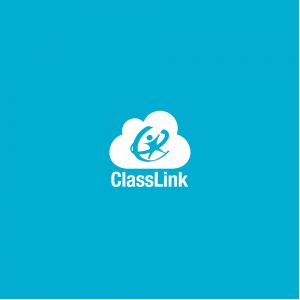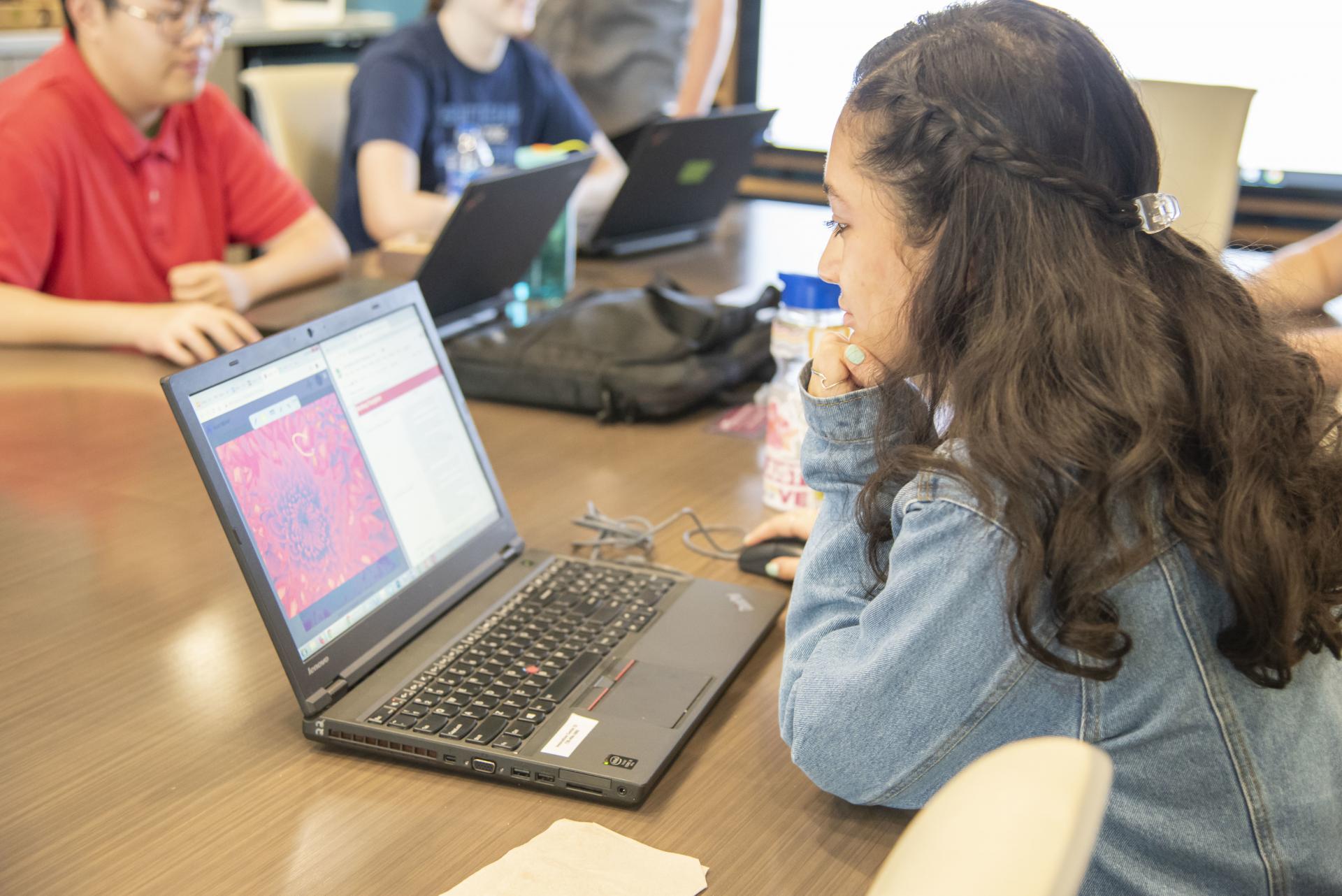At the cross-over of design arts and computing, the Virtual & Digital Design Path provides opportunities for students to use modern technology to bring their creative ideas to life. Students examine how virtual, digital, & manufactured products are made, and how they interact with our environment and impact our daily lives. Sustainability, environmental interaction, social consciousness and materials processes are emphasized.
Coursework in this pathway allows students to explore and develop solutions in five (5) main creative computing disciplines: augmented/virtual reality, 3-D modeling, Design Thinking, Digital Storytelling and video game design. Introductory coursework exposes students to state of the art technologies in these fields, while advanced coursework prepares students for industry certification and careers as designers and solution developers.
Opportunities are available during classes and after school for students to work with leading industry partners and commercial mentors.
There are no prerequisites for these courses.
Course Offerings
- Open to all 9-12th graders
- No prerequisites
(Formerly Intro. to Augmented & Virtual Reality Technologies)
Ignite your imagination and create the future!
This course introduces students to principles, techniques, and the skills required to develop a variety of advanced technology solutions. Students will be introduced to such technologies as VR and XR using a variety of different equipment including Meta Quest, HTC Vive, Pico Neos, and other immersive devices. This class focuses on using new and emerging technologies to solve real-world challenges and a variety of different applications and use cases. Developing exciting new applications through techniques such as Digital Storytelling and Design Thinking provides each student with cutting edge knowledge and hands-on experiences in high demand across a variety of different industries and career paths. The average starting salary for a developer in this field is $75,000 a year. Learning in this field allows students to build technical literacy and express creativity in an immersive engaging computer aided design field.
- Grades 9-12
- No Prerequisite (Some design experience recommended)
Designs that speak volumes. In today’s age, the expectations and industry standards for digital products are ever increasing. Dive into the end-to-end User Experience Design process, where you will spend the semester evaluating, testing, and redesigning a web experience! In this course, you will learn how to craft a professional design portfolio piece, understand contemporary UX design methodologies, and be shown how to innovate when designing at scale. Utilize the industry-standard design tool Figma to build up to an interactive, high fidelity prototype that will closely resemble a real, developed product!
- Open to all 9th-12th graders
- No Prerequisites
(Formerly CTE86110 Design Foundations)
Where Ideas Take Shape: Discover the Art of Problem-Solving
In this thought-provoking course, students will delve into the principles of Design Thinking, a user-centered approach focused on understanding and addressing the needs of clients, stakeholders, and end-users. Through a systematic exploration of various Design Thinking models, students will engage in key phases such as empathy building, brainstorming, ideation, prototyping, and testing.
This course will be offered as a concurrent enrollment class with Colorado State University, integrating their concepts, lectures, assignments, and project ideas into the curriculum. As a primarily theory-based course, students will participate in activities that enhance their skills in interviewing, team building, and collaborative exercises, all designed to develop effective and valuable design solutions.
By the end of the course, students will gain a deeper understanding of the importance of design in solving real-world problems. They will appreciate how design serves as a creative outlet that can enhance and improve lives in meaningful ways. This course is ideal for those interested in pursuing careers in design, innovation, and problem-solving.
- Open to all 9th-12th graders
- No prerequisites
(Formerly AR & VR Development for STEAM)
Step into Art: Create, Explore, and Experience in Virtual Reality!
In this innovative course, students will explore the intersection of art and technology by creating 3D models within Virtual Reality (VR) using a variety of software tools. Participants will also be introduced to Blender, a powerful 3D modeling software, as they design a virtual gallery to showcase their artwork, transitioning from analogue to digital formats.
Students will have the creative freedom to design their galleries, allowing for imaginative and unique spaces that reflect their artistic vision—whether fantastical or realistic. The galleries will serve as immersive environments where others can “wander” through and experience the students’ art in a virtual setting.
Artwork featured in the gallery may include:
- Analogue Drawings and Paintings: Scanned and digitized for display.
- 2D Digital Art: Created using software such as Adobe Photoshop.
- 3D Models: Crafted in 3D modeling software.
- 3D Objects/Sculptures: Digitally captured through 3D scanning techniques.
Throughout the course, students will gain hands-on experience in 3D modeling and VR design, developing both their technical skills and artistic expression. By the end of the course, students will have a captivating virtual gallery that showcases their diverse body of work, offering a unique perspective on the evolving landscape of art in the digital age.
- Open to all 9th-12th graders (no prerequisites)
Build it, play it, repeat!
Dive into the captivating world of game design in our Intro to Game Design class. Starting in MakeCode students will design and develop their own arcade-style video game. Using Unreal Engine 5, they’ll explore the magic of real-time 3D engines, laying a strong foundation for their journey into the game design universe.
- Prerequisite: CTE83230 Introduction to Game Design
Forge your path: Unlock endless careers with Game Engines!
Dive into the world of Unreal Engine 5, where you’ll discover how this powerful tool is shaping industries like 3D Animation, Fashion, and Advertising. Learn transferable skills essential to game design, develop your own Game Design Document, and bring your vision to life. Plus, collaborate with University Students to develop marketing plans for your game idea! Unleash your creativity and build the foundation for a career in game design and beyond!
- Open to all 9th – 12th graders
- No prerequisites
(Formerly CTE86112 Intro to 3D Modeling)
Craft Your Hero: 3D Model, Story, and Inspire!
In this hands-on course, students will explore the dynamic world of 3D modeling using Blender and various 2D software applications. The primary focus will be on creating a unique action figure inspired by a “hero” from history or personal experience.
Students will embark on a journey that combines artistic creativity and technical skills, learning to design and model their action figure for multiple formats, including rendered still images and animations. The final product will also be suitable for 3D printing, ensuring that the model is articulated and posable.
Throughout the course, students will conduct research on their chosen hero, developing a compelling backstory that will serve as the foundation for their project. This will culminate in the creation of a storyboard and a concise origin story graphic novel, limited to 6-7 pages. Each student will package their graphic novel alongside their action figure, creating a cohesive narrative experience.
By the end of the course, students will have not only honed their 3D modeling skills but also gained experience in storytelling, character design, and the practical aspects of preparing a model for production. This innovative course is ideal for aspiring artists, designers, and storytellers eager to bring their ideas to life.
- No Prerequisite
- Open to Grades 9-12
(Formerly CTE86115 Product Design)
Design Your Future: Innovate, Create, and Elevate!
In this immersive course, students will delve into the practical applications of design concepts across various fields, including product, apparel, architecture, and transportation design. Through a blend of analog techniques and digital software, students will engage in real-world design challenges, fostering creativity and innovation.
The course is structured around two key projects: a design package for a competitive design challenge and a tailored design package for a local industry, with guidance from industry expert Lynn Eckart. Students will explore competition opportunities, selecting one that aligns with their interests and skills.
Each design package will encompass the following components:
- Concept Statement: Articulating the core idea and vision behind the design.
- Design Statement: Detailing the design process, influences, and objectives.
- Orthographic, Isometric, and Human Scale Perspective Drawings: Creating comprehensive visual representations of the design from multiple viewpoints.
- Annotated Full-Color Drawings: Providing detailed illustrations with explanatory notes to enhance understanding.
By the end of the course, students will have developed a robust portfolio showcasing their ability to conceptualize, design, and communicate ideas effectively. This course is ideal for aspiring designers looking to make impactful connections in the industry while honing their skills in a collaborative environment.


